Side Effects Trajectories in rTMS Treatment for Depression: High Frequency Left (10Hz) vs. Intermittent Theta Burst Stimulation
Afifa Humaira, Sihaoyu Gao , Lang Wu, Jonathan Downar, Daniel Blumberger, Fidel Vila-Rodriguez
Introduction
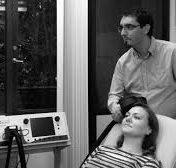
According to WHO, Major Depressive Disorder (MDD) is a leading cause of disability that affects 350 million people worldwide, and 30% of them suffer from treatment-resistant depression (TRD). Repetitive Transcranial Magnetic Stimulation (rTMS) is a first-line treatment for TRD. Newer rTMS protocols are being developed and it is extremely important to characterize their side effect profile and trajectories.
 Therefore, the goal of this work is to compare the side effects of two rTMS protocols, namely High Frequency Left (10 Hz) and Intermittent Theta Burst Stimulation (iTBS), in 20 patients with TRD from a study conducted by the Non-Invasive Neurostimulation Therapies Lab at the University of British Columbia, Department of Psychiatry.
Therefore, the goal of this work is to compare the side effects of two rTMS protocols, namely High Frequency Left (10 Hz) and Intermittent Theta Burst Stimulation (iTBS), in 20 patients with TRD from a study conducted by the Non-Invasive Neurostimulation Therapies Lab at the University of British Columbia, Department of Psychiatry.
Methods and Material

The main goal of this project is to explore the common side effects of rTMS that emerged in 20 patients in the study, and to compare the frequency and severity trends of the reported side effects for both HFL and iTBS protocols throughout the course of the treatment, by analyzing different side effects questionnaires completed by the participants.
How to quantify/measure side effects in this study:
- Treatment Confirmation: Completed by RA throughout tx; side effects are asked by RA and answered by pt.
- Comfort Rating Questionnaire (CRQ) A: Self-reported by patient on a lab tablet/computer a few minutes after tx.
Results
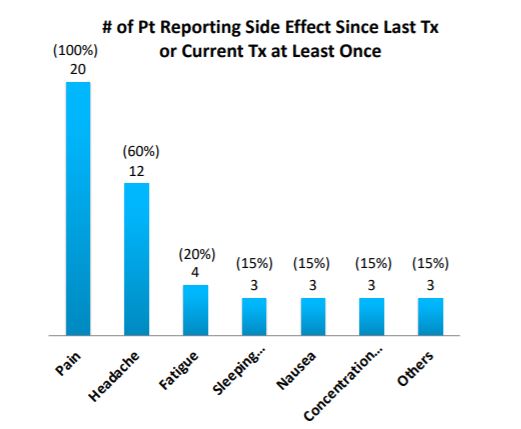
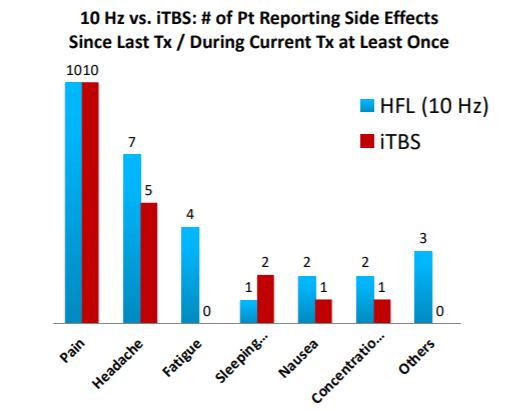
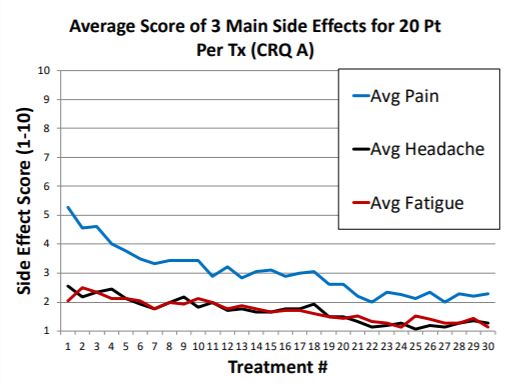
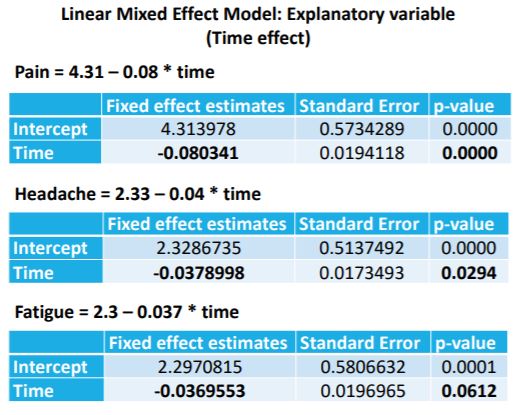
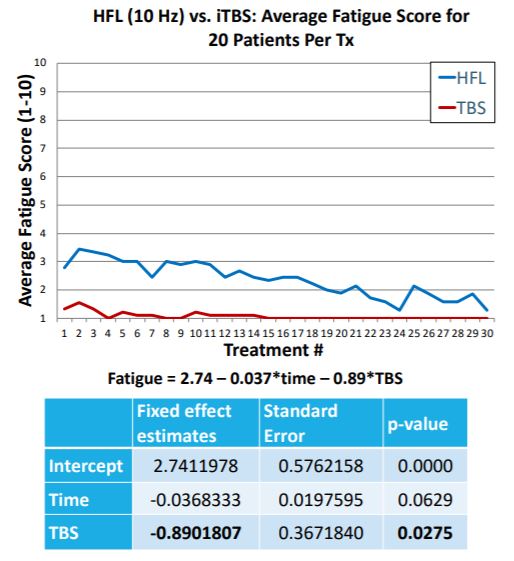
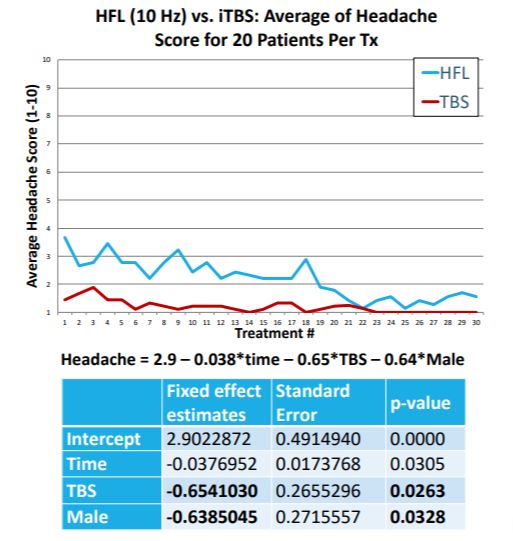

Conclusion
- Pain on stimulation site, headache, and fatigue are the three most common side effects of rTMS, with pain/discomfort being the most frequent one, where all patients reported to have experienced it at least once over the course of the treatment.
- The side effect scores for pain, headache, and fatigue show a significant decrease over time (p-values of 0.0000, 0.0294, and 0.0612 respectively).
- Patients who received HFL (10 Hz) protocol report higher severity of fatigue (p-value of 0.0275) than patients who received iTBS protocol, when the treatment time is controlled.
- Patients who received HFL (10 Hz) protocol report higher severity of headache (p-value of 0.0263)
than patients who received iTBS protocol, when controlling for the same treatment time and sex. - Additionally, female subjects report higher severity of pain than male subjects (p-value of 0.0577),
when the treatment time is controlled. - Female subjects report higher severity of headache than male subjects (p-value of 0.0328), when controlling for the tx time and treatment type.
- Lastly, stimulation intensity, age, and responsiveness (i.e. responders vs. nonresponders) do not have significant effect side effect scores on pain, headache, and fatigue.
Discussion
- A main drawback of this dataset is that the sample size of 20 is small, so a larger sample size is needed to confirm the above conclusions.
- The fact that the HFL group patients are exposed to the rTMS stimulation 10 times longer per session than the iTBS group could explain why they experience more severe side effect like headache and fatigue post-treatment.
- With a larger sample size, other covariates like stimulation intensity, age, and responsiveness of the patients could be further assessed to see if there are significant differences of the side effect scores between the groups.
- The results of this project could be important for future patients and clinicians in deciding which rTMS protocol to receive/administer, so that the patients could be informed of this knowledge to help make a decision on which treatment would be most tolerable.
Great insights! rTMS Ottawa is truly making a difference for those struggling with depression and other mental health conditions. Non-invasive and effective, it’s changing lives. Have you or anyone you know tried rTMS therapy? Would love to hear personal experiences!”